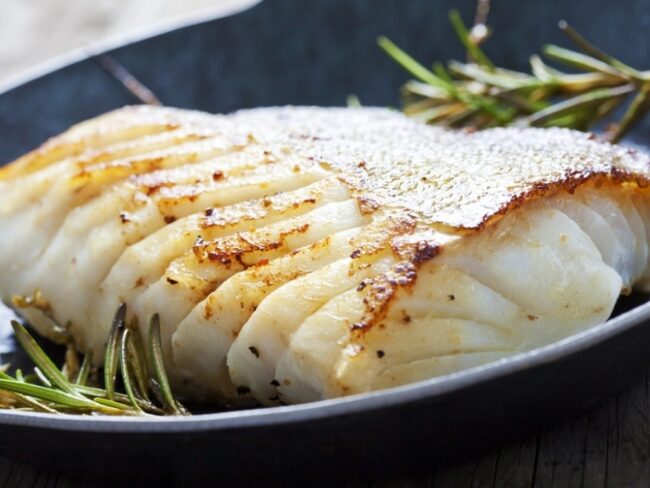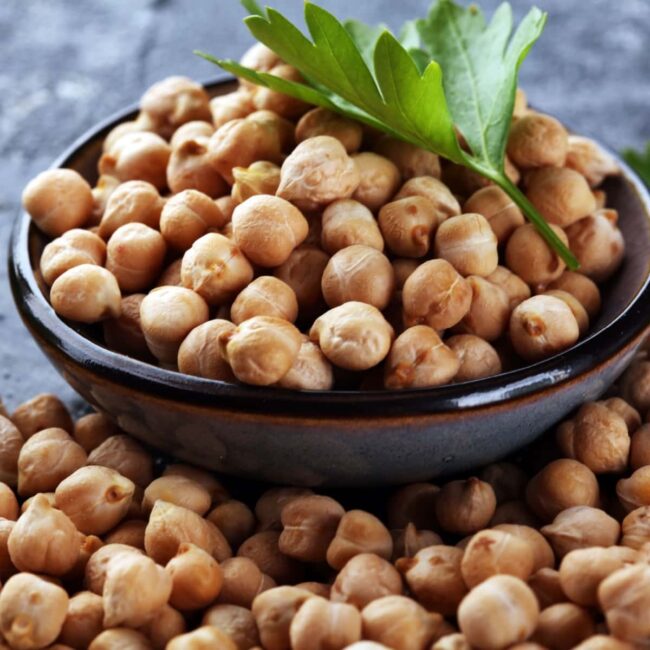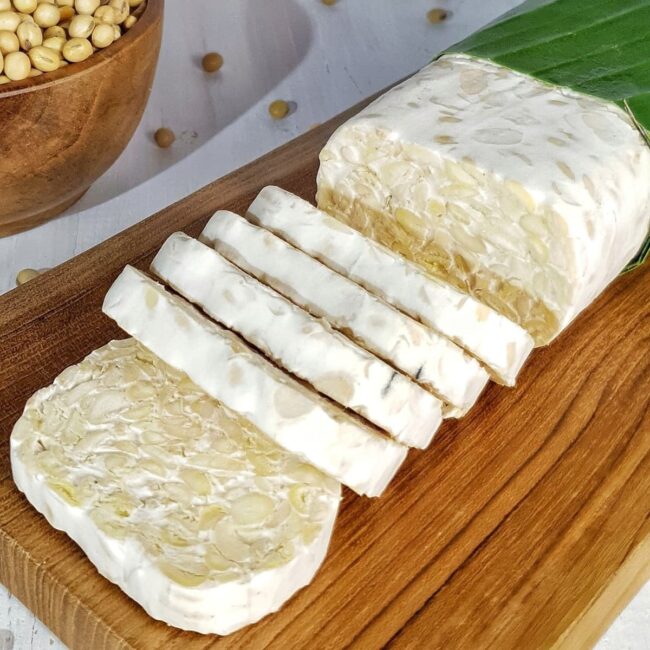7 Simple Ways to Swap Tuna in Recipes
Tuna substitutes allow meals to stay protein-packed and satisfying without this popular fish.
Some choices mimic its firm texture, while others bring a softer, flaky quality.
Whether in salads, sandwiches, or cooked dishes, the right replacement keeps the flavor bold.
Selecting an option that matches the dish’s texture ensures a seamless swap.
What to Know About Tuna
Tuna is a versatile, protein-rich fish commonly used in salads, sandwiches, and sushi. It has a firm texture and a mildly sweet, meaty flavor.
Tuna’s Nutritional Facts
Tuna serves as a nutritional powerhouse packed with various essential nutrients.
Rich in omega-3 fatty acids, it supports heart health by helping to reduce inflammation and lower the risk of heart disease.
A significant protein source, tuna aids muscle growth and repair, appealing to those focused on fitness.
Vitamin D contributes positively to bone strength while bolstering the immune system's effectiveness.
Important minerals like selenium act as antioxidants, providing additional protective benefits in each serving of this fish.
Enjoying tuna not only nourishes but also promotes overall well-being through its impressive nutrient profile.
Tuna Taste and Feel
Tuna's unique qualities make it a popular choice in many recipes.
Its taste ranges from mild and firm in Albacore to rich and tender in Bluefin, which offers a flavor that resembles steak.
This fish is not overly fishy, appealing even to those who typically avoid seafood.
The texture stands out as well; it's sturdy enough for grilling or searing without falling apart easily.
Awareness of mercury levels is important since larger tuna species tend to have higher concentrations due to their size and lifespan.
Enjoying tuna in moderation while incorporating other seafood options can help balance your diet while savoring its delicious taste and health benefits.
Best Tuna Replacement Options
Seafood alternatives to tuna provide similar textures and flavors in a range of dishes. They ensure variety in salads, sandwiches, and cooked meals.
Choosing Eco-Friendly Seafood
Sustainability plays a key role when selecting seafood, especially as an alternative to tuna.
Overfishing has harmed many fish populations, so it's vital to make choices that support ocean health.
Checking resources like the Monterey Bay Aquarium’s Seafood Watch can help identify safe options for consumption.
Local fishmongers often provide valuable insights on sustainable selections available in your area.
Choosing seafood certified by organizations such as the Marine Stewardship Council ensures responsible sourcing and supports healthier oceans.
Common Fish Substitutes
Fish alternatives to tuna provide exciting choices for diverse recipes.
Cod's mild taste makes it adaptable for many meals, while snapper brings a sweet and nutty flavor that fits nicely in various dishes.
Mackerel stands out with its rich taste and high nutrient content, especially the Atlantic variety, which is also sustainable.
Halibut offers firm white flesh that's perfect for grilling or pan-searing.
Salmon delivers an oily texture packed with omega-3 fatty acids; wild-caught Alaskan salmon is particularly eco-friendly.
Canned sardines serve as a quick substitute in sandwiches and salads, adding convenience without sacrificing flavor.
Shellfish Alternatives
Certain shellfish can serve as excellent substitutes for tuna, providing similar texture and heartiness in meals.
Amberjack stands out with its firm texture and mild flavor, commonly found in warmer waters.
Sea bass delivers tender white meat paired with a gentle taste that enhances various dishes.
Flounder features a delicate and fine texture, perfect for those who appreciate subtle flavors while seeking alternatives to fish.
Exploring these options can lead to satisfying culinary experiences beyond traditional seafood choices.
Plant-Based Tuna Replacements
Plant-based tuna alternatives offer nutritious, sustainable substitutes for seafood recipes. They provide the same texture and flavor without using fish.
Plant-Based Alternatives
Young, canned jackfruit serves as an excellent plant-based replacement for tuna due to its hearty texture.
Seasoning it with nori or soy sauce brings a seafood-like taste that elevates dishes.
Combining jackfruit with vegan mayonnaise creates a filling reminiscent of traditional tuna salad.
Cauliflower also shines in this role; finely chopped and seasoned, it captures the essence of a tasty spread perfectly.
Key ingredients like nori add depth with their fishy flavor, while soy sauce enhances the overall seasoning profile.
Hummus works well too, acting as both a binder and flavor booster in various recipes.
Tofu and Bean Choices
Plant-based alternatives to tuna offer a variety of delicious choices.
A mix of chickpeas, white beans, and other legumes creates a healthy foundation for vegan “tuna” dishes.
Firm tofu works wonderfully when crumbled and seasoned with sea vegetables or kelp powder; marinating and baking it results in a flaky texture reminiscent of canned tuna.
Jackfruit also serves as an excellent option for those seeking sustainable food sources.
These ingredients make it easy to follow an ethical diet without compromising on taste or texture.
Plenty of simple recipes await anyone ready to explore this flavorful journey into plant-based eating.
Protein Substitutes for Canned Tuna
Alternative proteins for canned tuna provide plant-based and non-fish options with rich flavors. They work well in sandwiches, salads, and casseroles.
Types of Canned Fish
Canned sardines pack a powerful punch of nutrition in a small size.
This fish is rich in protein, omega-3 fatty acids, and essential minerals.
Versatile options exist for enjoying them, whether mixed into salads or layered on sandwiches.
Canned salmon serves as an excellent alternative to traditional canned tuna.
It offers a great source of protein and omega-3s while often being available as wild-caught varieties.
Edible skin and bones add extra calcium to the mix, enhancing its health benefits significantly.
Chicken and Meat Alternatives
Tempeh or tofu serves as an excellent choice for those seeking plant-based protein.
These ingredients can be seasoned to replicate the taste of fish, making them versatile options for sandwiches and salads.
Cooked and shredded chicken breast acts as a great substitute for canned tuna, providing lean protein without compromising nutrition.
Each alternative presents its own flavor, allowing you to prepare meals that cater to your preferences while maintaining deliciousness.
Experimenting with these substitutes can lead to satisfying dishes that surprise the palate with new tastes and textures.
Enjoy discovering how each option enhances your culinary creations!
Health Considerations for Eating Tuna
Health considerations for eating tuna include mercury levels and sustainability. Choosing responsibly sourced tuna reduces environmental impact and health risks.
Mercury Levels and Dangers
Monitoring tuna consumption is important due to the presence of mercury, a harmful heavy metal found in various fish.
Pregnant women and young children face the greatest health risks from mercury, which can harm brain function and damage the nervous system.
Levels of this toxic substance differ among fish based on their species, size, habitat, and diet.
Regular exposure to elevated mercury levels may result in serious neurological and developmental problems over time.
Awareness about these risks helps individuals make safer choices regarding their seafood intake for better health outcomes.
Advantages of Omega-3 Fats
Tuna serves as a great source of Omega-3 fatty acids, which play a vital role in maintaining overall health.
These nutrients significantly contribute to heart well-being and support brain function while also boosting the immune system.
Additionally, tuna is packed with essential vitamins such as Vitamin D and B-complex vitamins that promote strong bones and enhance immunity.
Regular consumption helps lower blood pressure, reduce inflammation, and improve cognitive health.
This fish stands out not only for its nutritional value but also for its versatility in various dishes.
Including tuna in meals can lead to numerous health advantages over time.
Best Tuna Substitutes in Recipes
Best tuna substitutes in recipes include salmon, chicken, or jackfruit, depending on the dish. These options offer similar texture and protein content.
Tuna Salad Alternatives
A tasty alternative to traditional tuna salad involves using mashed chickpeas mixed with vegan mayonnaise.
A dash of lemon juice adds a refreshing zing, while a pinch of sea salt brings out the flavors.
For those who enjoy a hint of ocean taste, chopped nori or a splash of soy sauce can enhance the dish further.
This combination achieves both texture and heartiness similar to classic tuna salad without any seafood involved.
Perfect for sandwiches or as a side dish, this recipe offers satisfying nourishment for everyone.
Enjoying this delicious option can make meal prep both fun and creative!
Sandwich and Wrap Options
A satisfying sandwich filling can come from jackfruit mixed with vegan mayonnaise, tahini, and a hint of lemon juice.
This fruit's texture resembles meat, making it perfect for wraps and sandwiches.
Tempeh offers another great option when marinated and cooked properly; its ability to soak up flavors makes it an excellent substitute for tuna.
Both ingredients add depth to any meal while keeping it plant-based.
Enjoying these unique flavors elevates your lunch experience with deliciousness that feels hearty yet fresh.
Sushi and Sashimi Alternatives
Using avocado slices adds a rich, creamy feel to sushi rolls or sashimi.
Marinated beetroot offers a colorful and flavorful alternative that can surprise the taste buds.
These substitutes not only enhance the dish's texture but also elevate its visual charm.
Raw tuna alternatives allow for creativity in making delicious sushi without compromising on taste or presentation.
Choosing these ingredients opens up exciting options for those who prefer plant-based meals while still enjoying classic flavors.
Consider these choices to bring freshness and flair to your culinary creations.
Pasta Dish Substitutes
Salmon serves as a great substitute in pasta dishes that include tuna.
Its flaky texture and bold taste enhance the dish beautifully.
Following the same cooking steps as for tuna, cook the salmon and then flake it into your pasta.
For those seeking plant-based choices, marinated tempeh or seasoned chickpeas fit well into these recipes too.
These alternatives add unique flavors while keeping meals satisfying and nutritious.
Flexibility in ingredients allows everyone to enjoy delicious options tailored to their preferences.
Casserole and Dip Ideas
Cooking with white beans or canned salmon opens up new possibilities for casseroles and dips.
White beans add a rich creaminess, soaking up the flavors from herbs and spices, which works wonderfully in baked recipes.
Canned salmon offers a similar flaky texture to tuna, providing an upscale touch even though it costs more.
When substituting ingredients, pay attention to the unique qualities of each option's flavor and texture.
This strategy keeps meals enjoyable while making ingredient changes seamless.
Deliciousness can still shine through despite any substitutions made in your favorite dishes.




